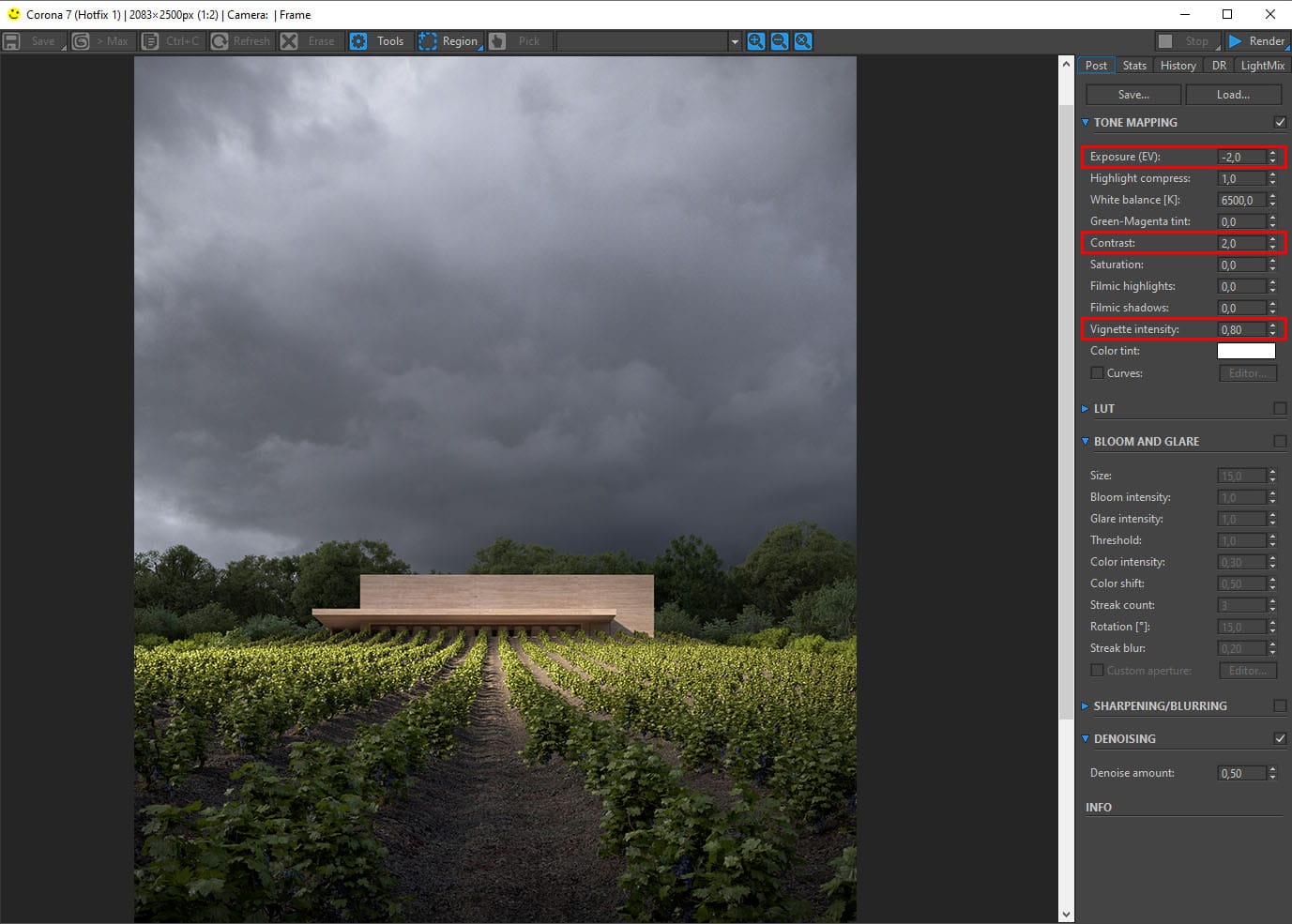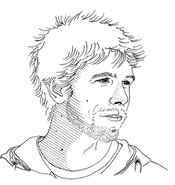Introduction
The scene is technically straightforward. Simplicity is also what often characterizes my way of approaching an image. I like to work on capturing the gaze by placing art before technique. I devoted only two days to this scene.
Day one for artistic research, and a day two for 3D manipulation and rendering with 3DS Max and Corona Renderer.
In this logic of simplicity, I set myself the objective of not having recourse to post-production. The final image is therefore “raw” and Photoshop did not intervene in the workflow.
The production of this image is a personal initiative, and it was not commissioned to me by the architect. I didn’t share the picture with him until I finished it. I was delighted to receive his compliments after he permitted me to publish it.
The project exists in reality. Below is a selection of photos taken by photographer Frederik Vercruysse for Atelier Marc Barani and published on ArchDaily.
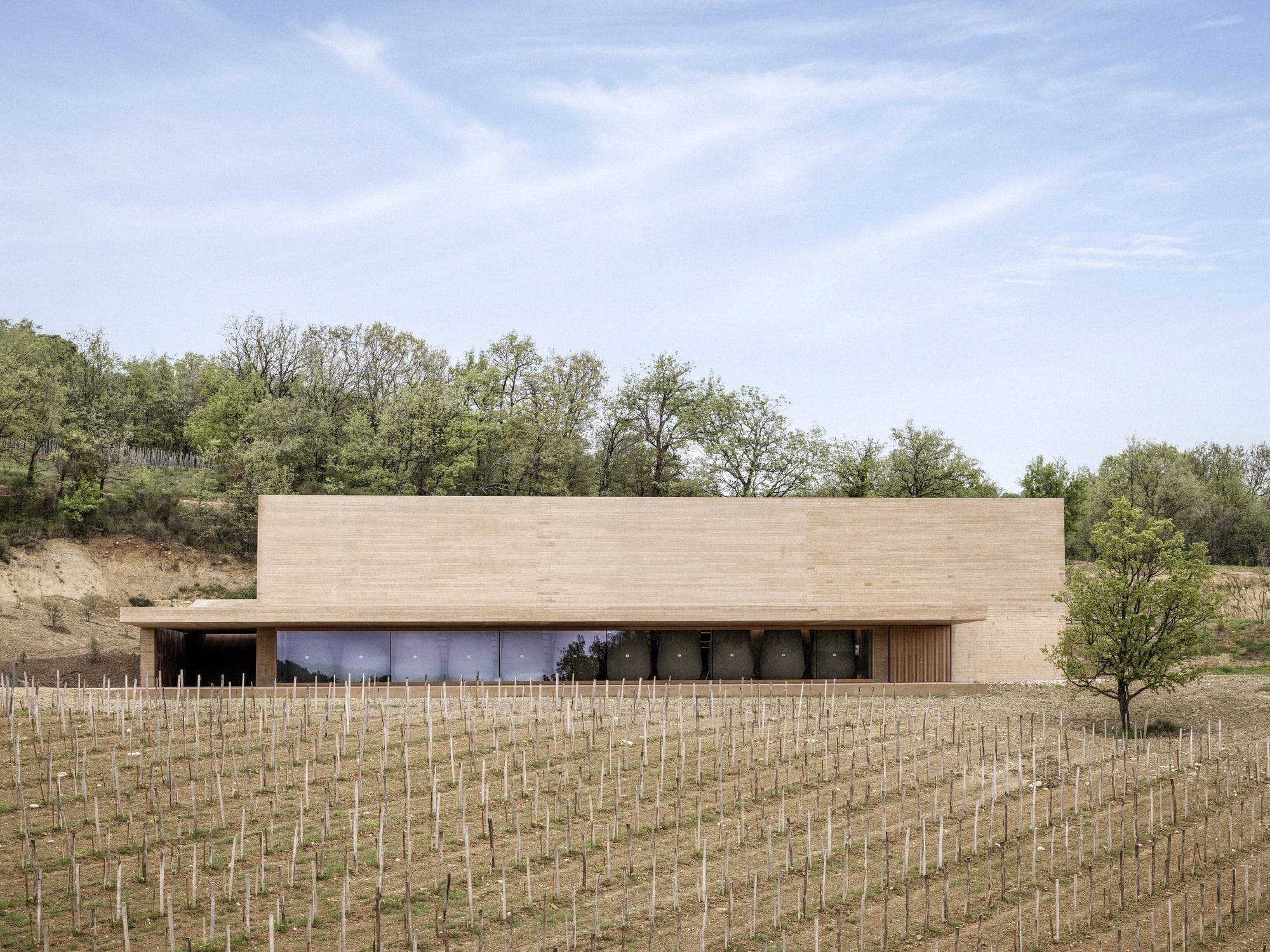
Table of Contents
Gathering References
I have always been fascinated by the richness of the sky. I particularly appreciate the atmosphere between light and shade. These two images below, one by MIR and the other by SORA, motivated my first ideas.
Composition
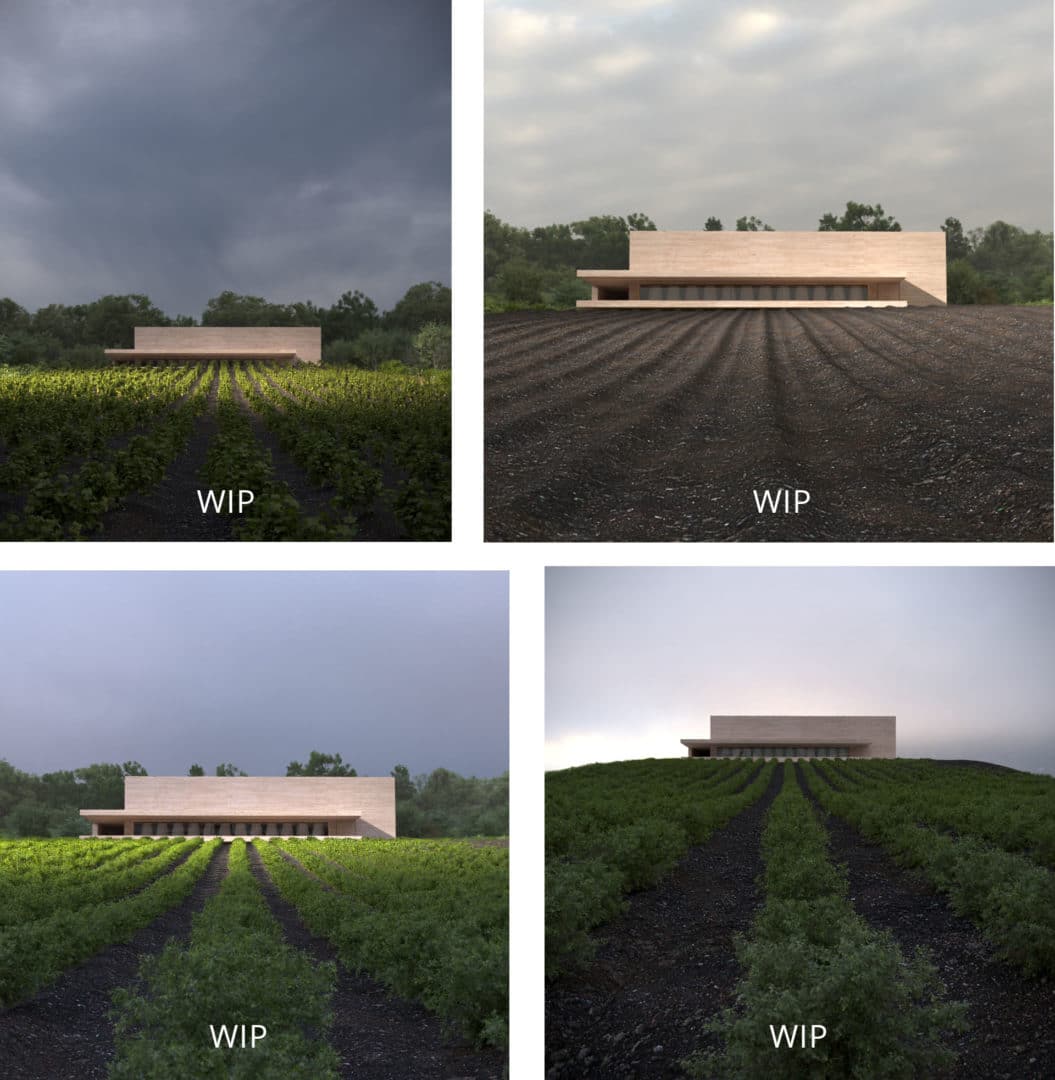
All HDRIs tested are from HDRI Haven. Interestingly, the sky chosen for the final image is rich in nuance, almost uniformly dark with a brightening upwards, thus helping the gaze move there and recall the idea of the breakthrough of light. I thanked the author of this HDRI for his work.
The scene is not lit only by this HDRI. The addition of a spotlight allowed the effect of a breakthrough of the sun—more details in the “lighting” part.
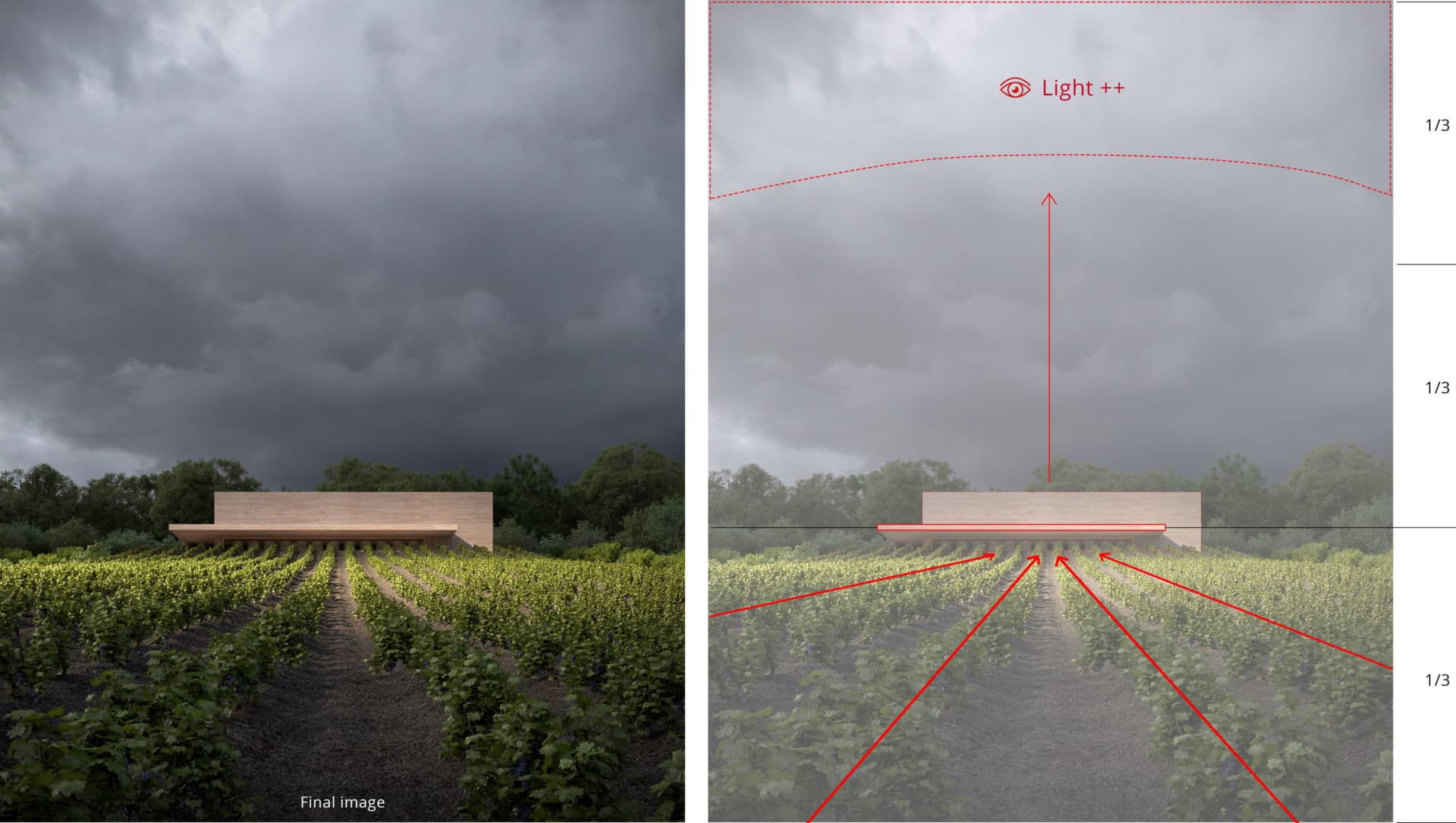
I found the vertical framing of the image was all that more important because of the horizontality of the project. As seen previously with the references, verticality invites the gaze to browse the image from bottom to top. The cap Marc Barani’s building is a strong mark of this horizontality. I made sure that the light came to emphasize it throughout my tests. This cap lines up with the first third of the frame in the composition.
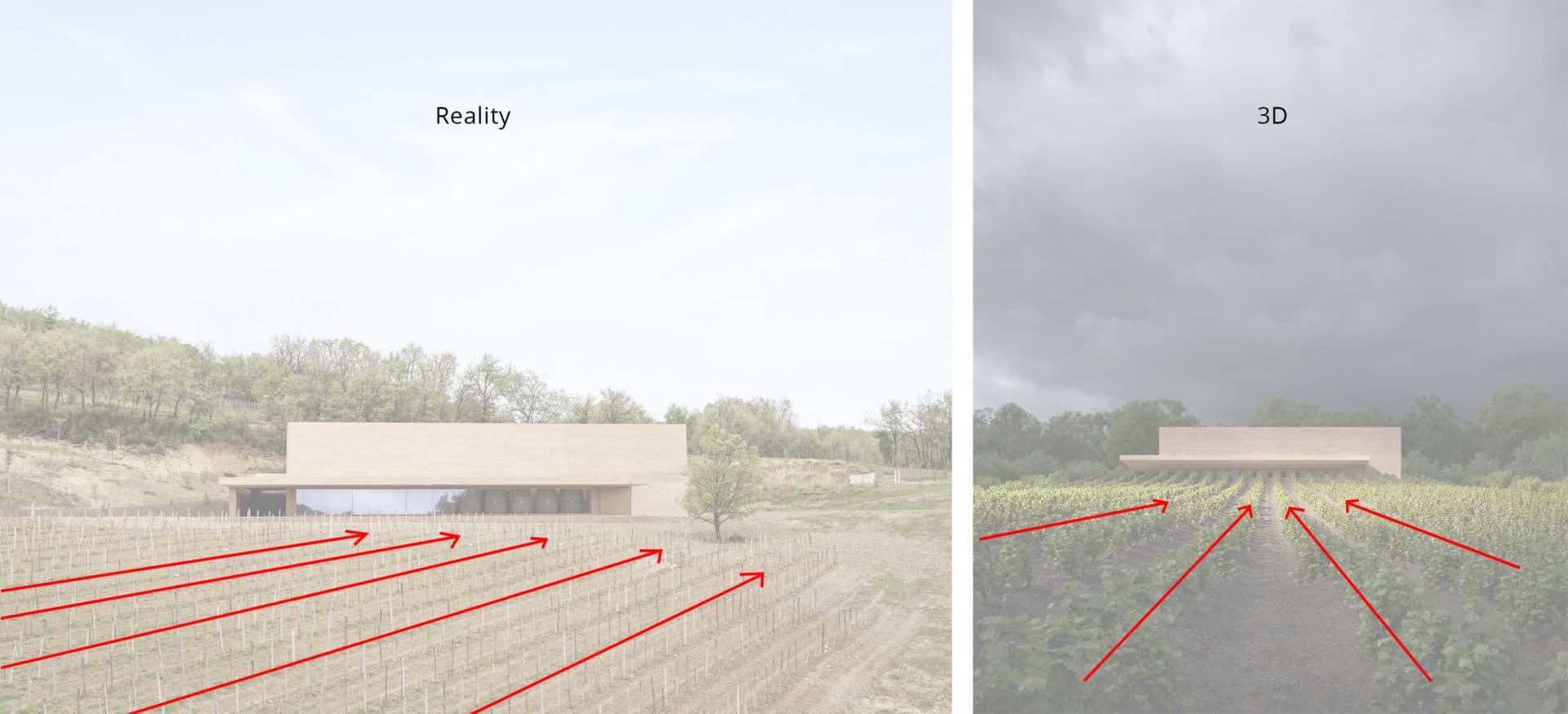
3d Modeling
Terrain
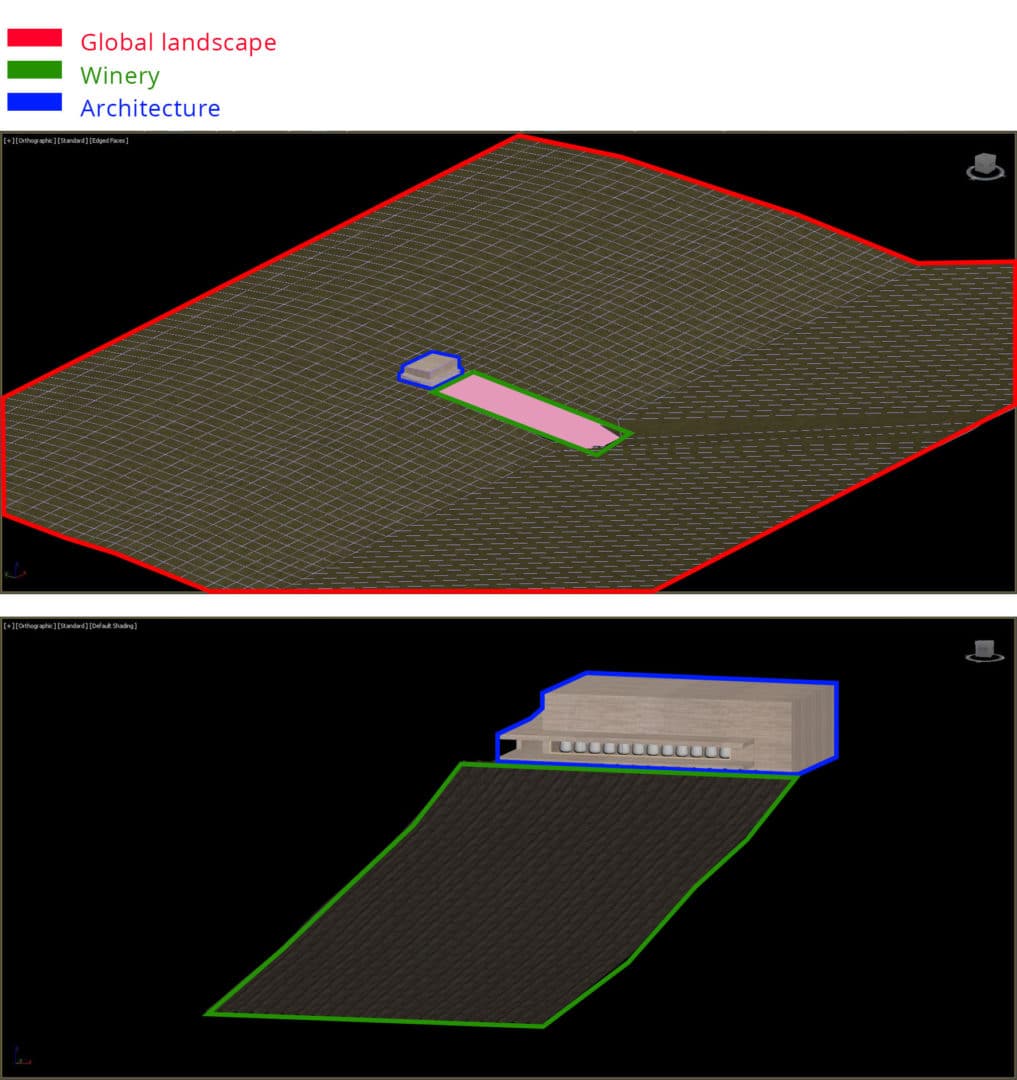
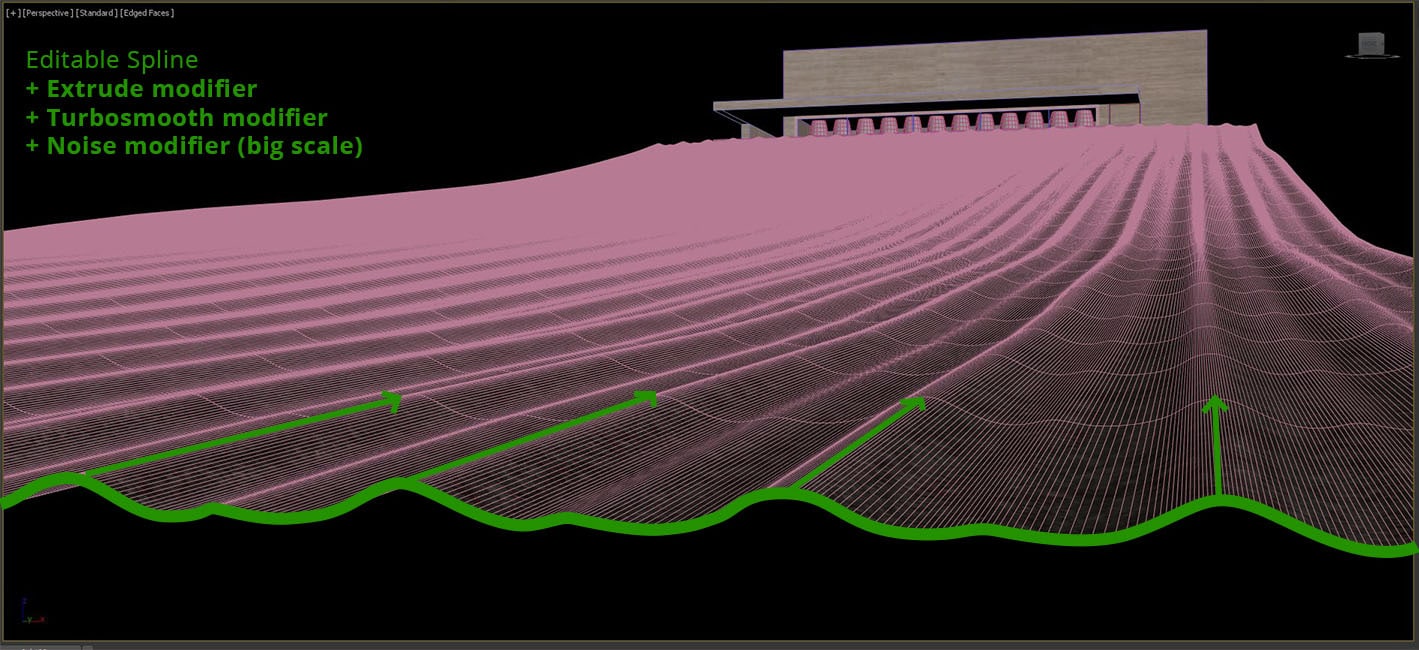
The Trees & Vines
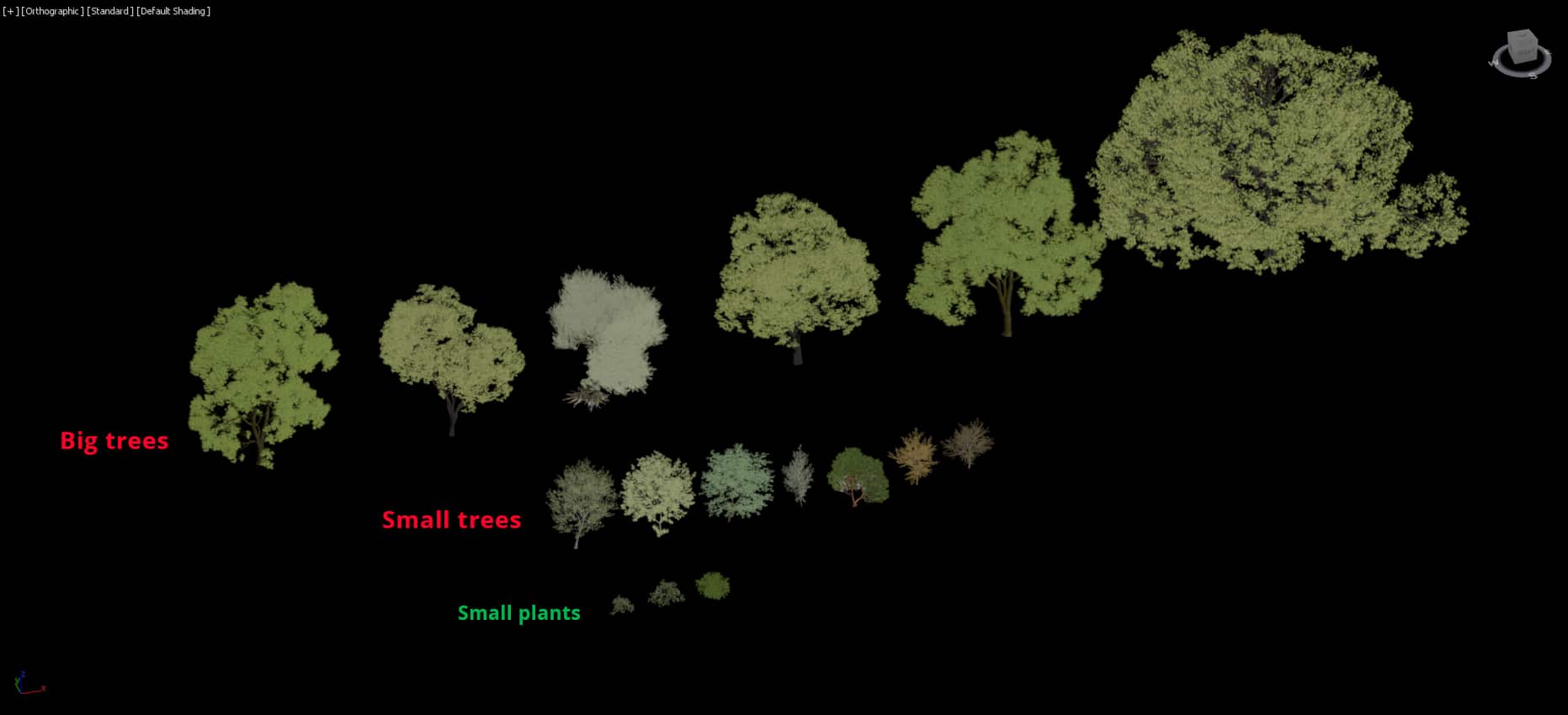
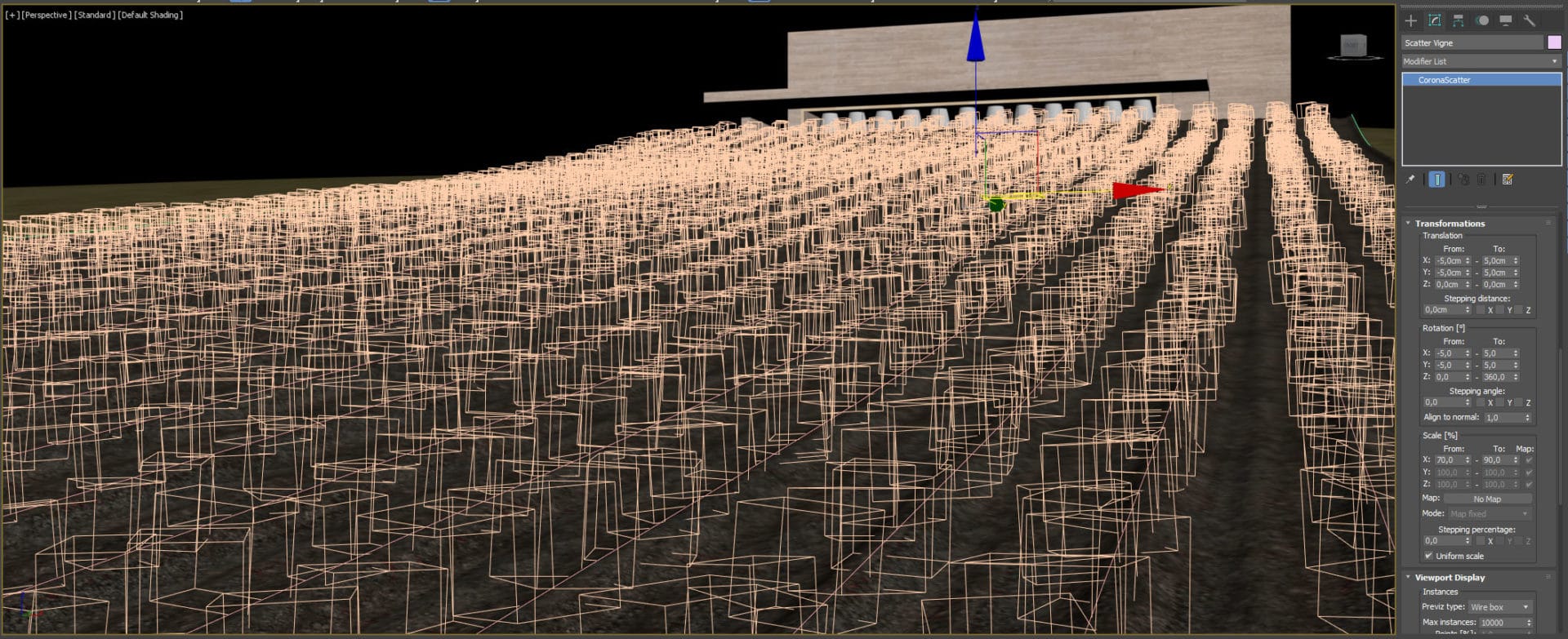
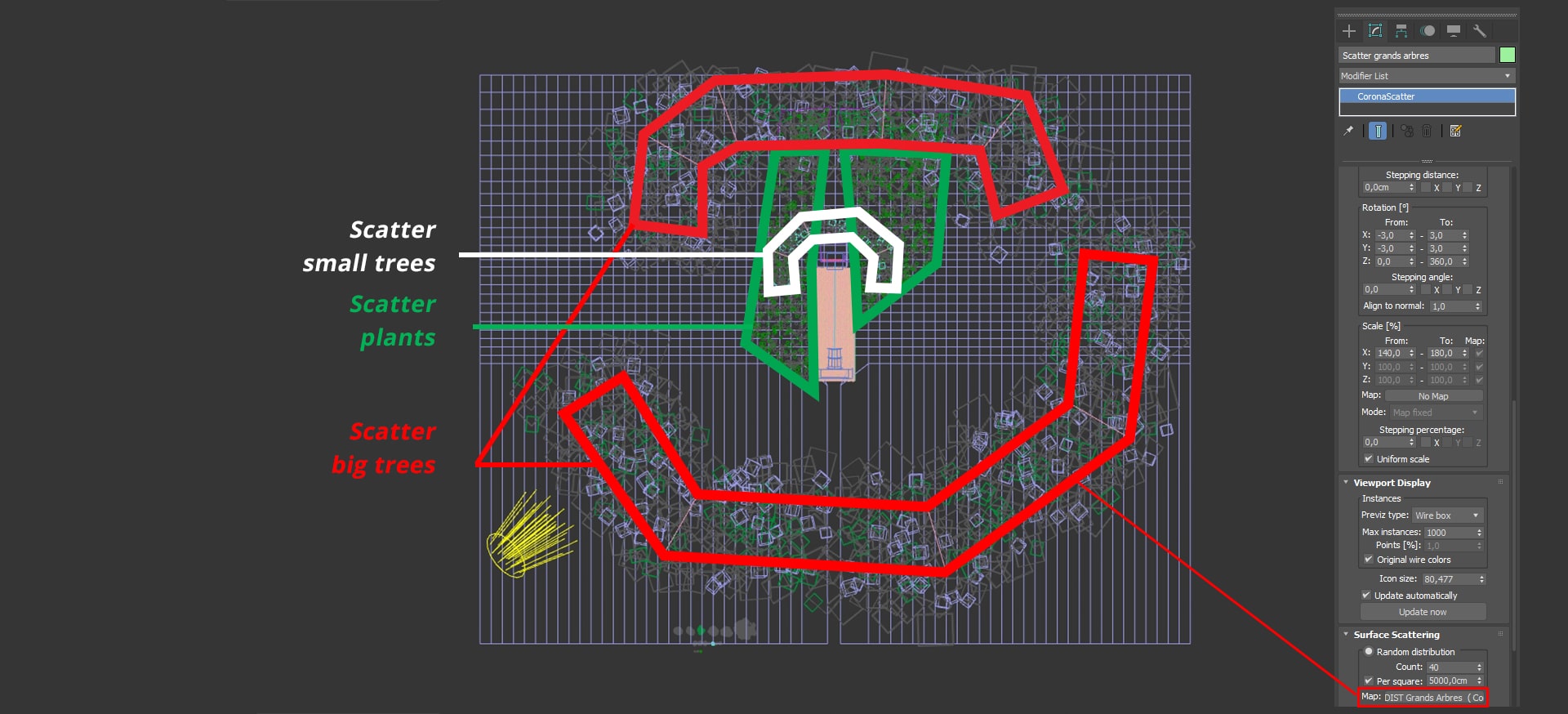
The Building
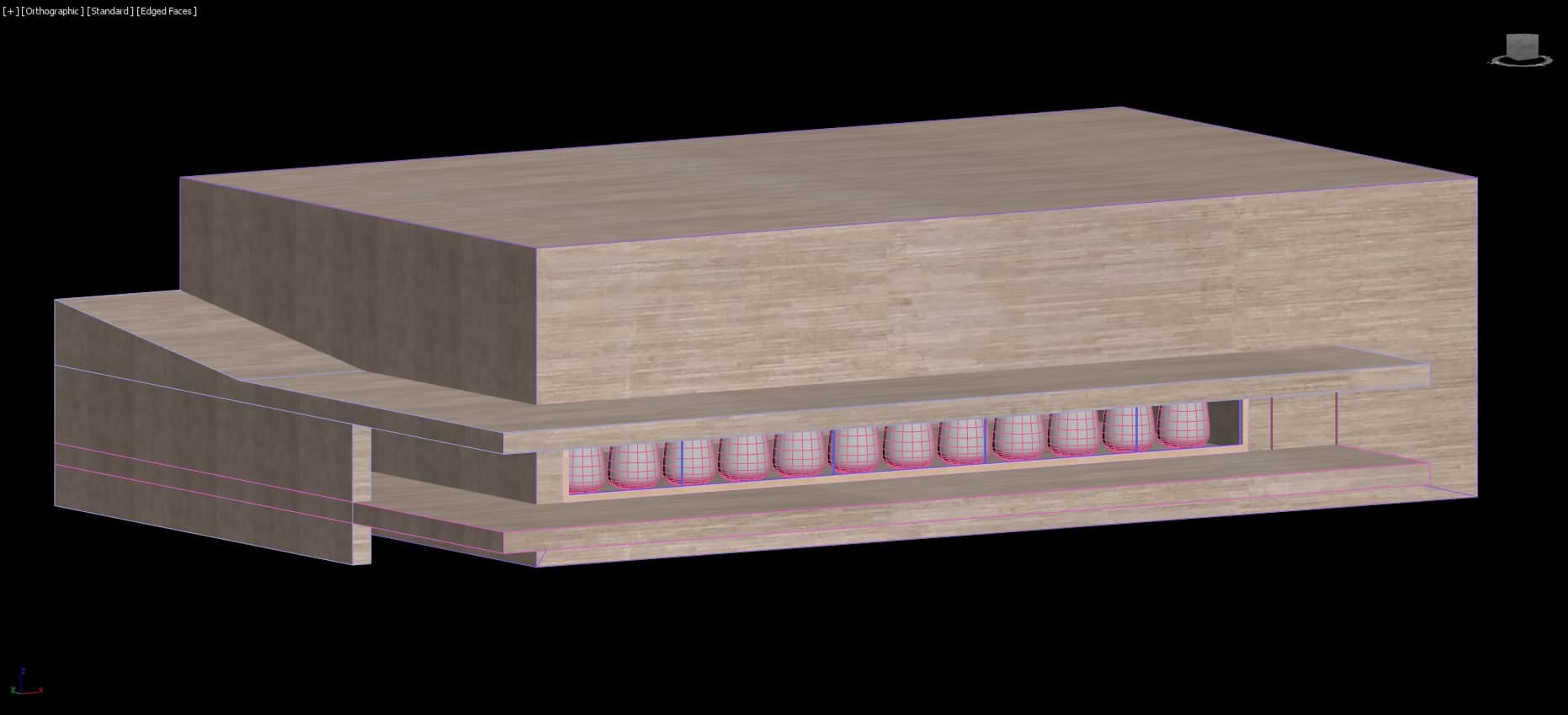
Textures & Materials
The Ground
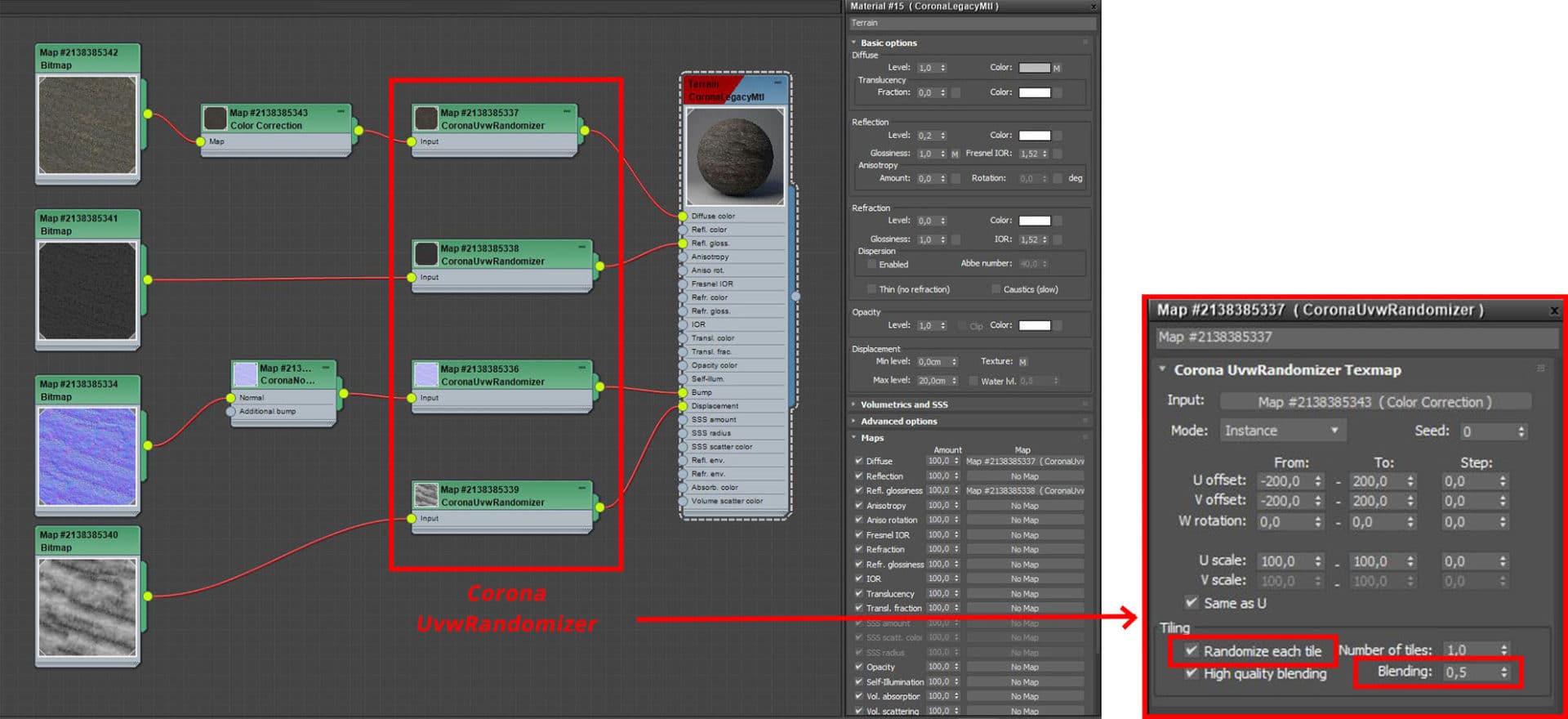
The Facades
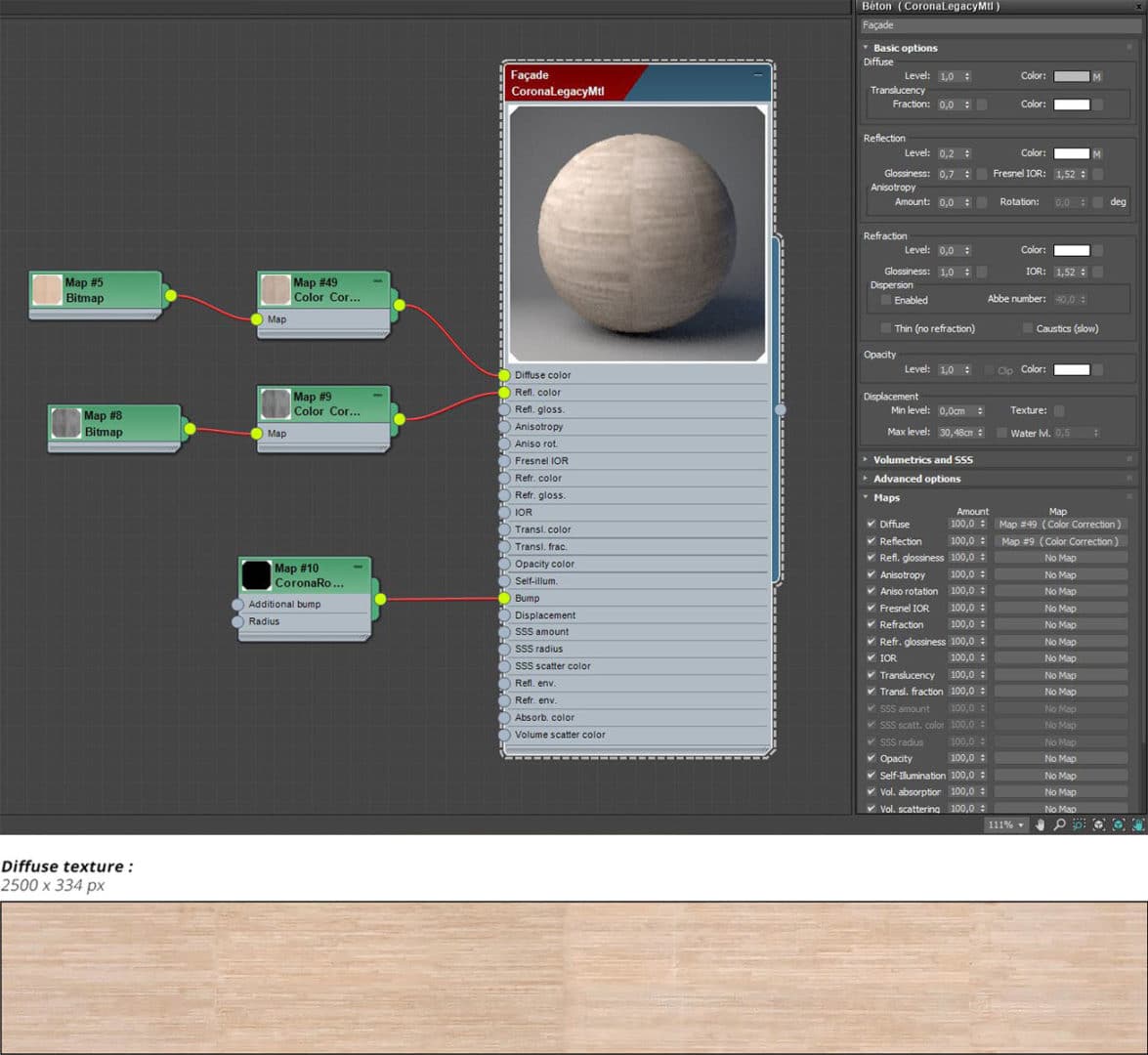
The Plants
Lighting
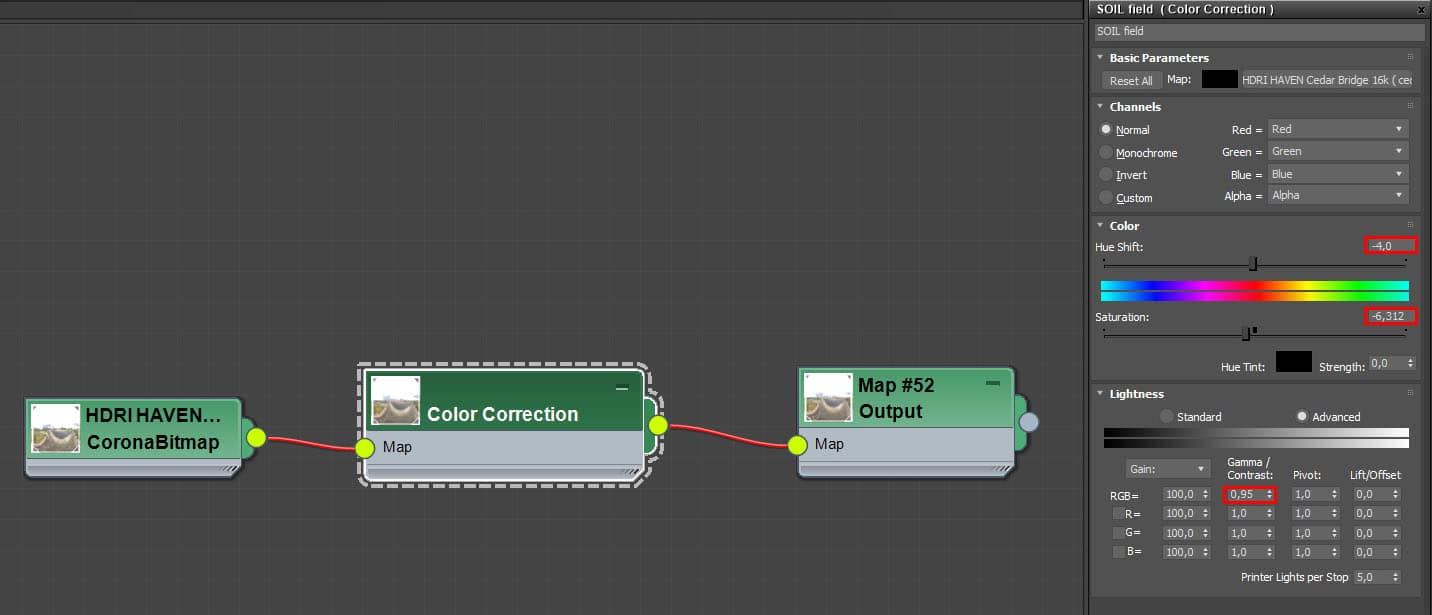
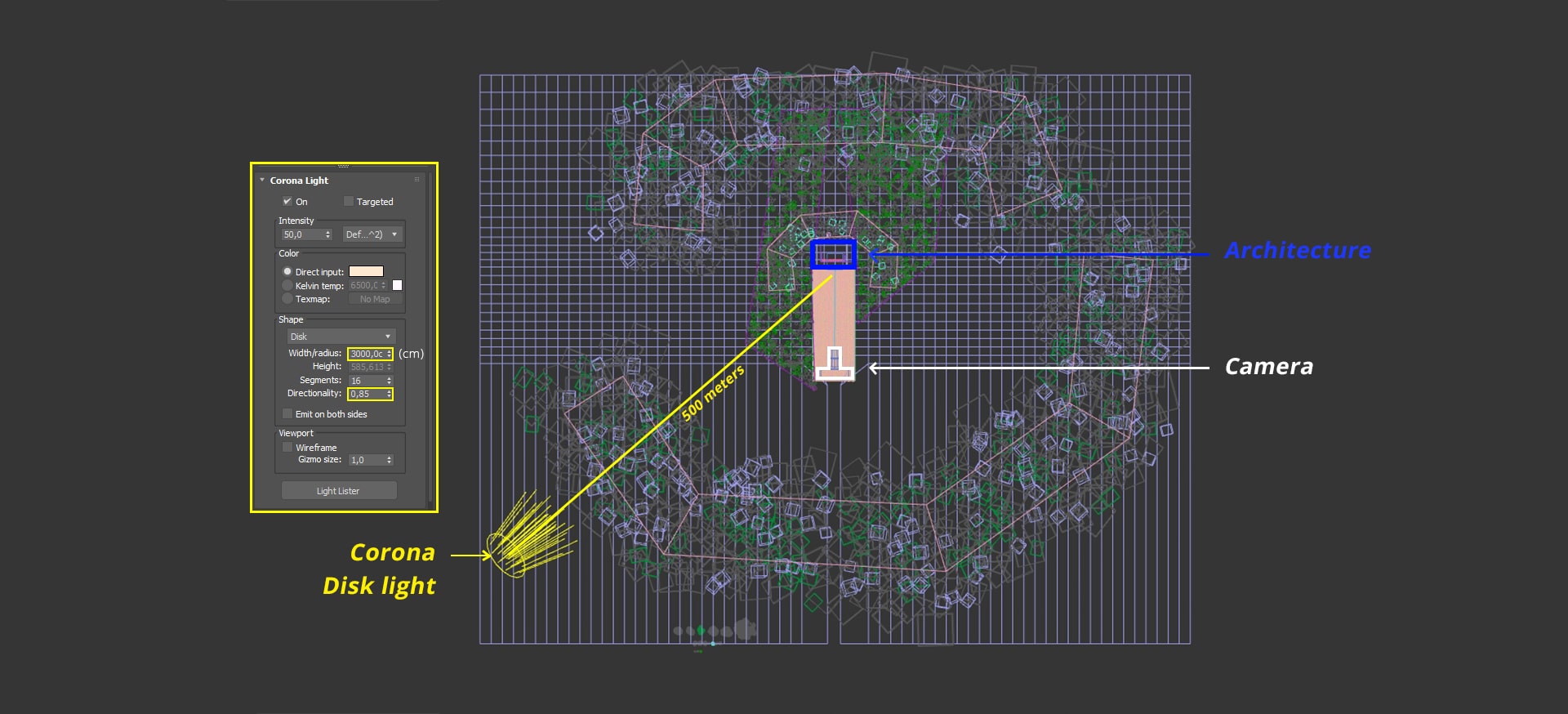
Post Production
